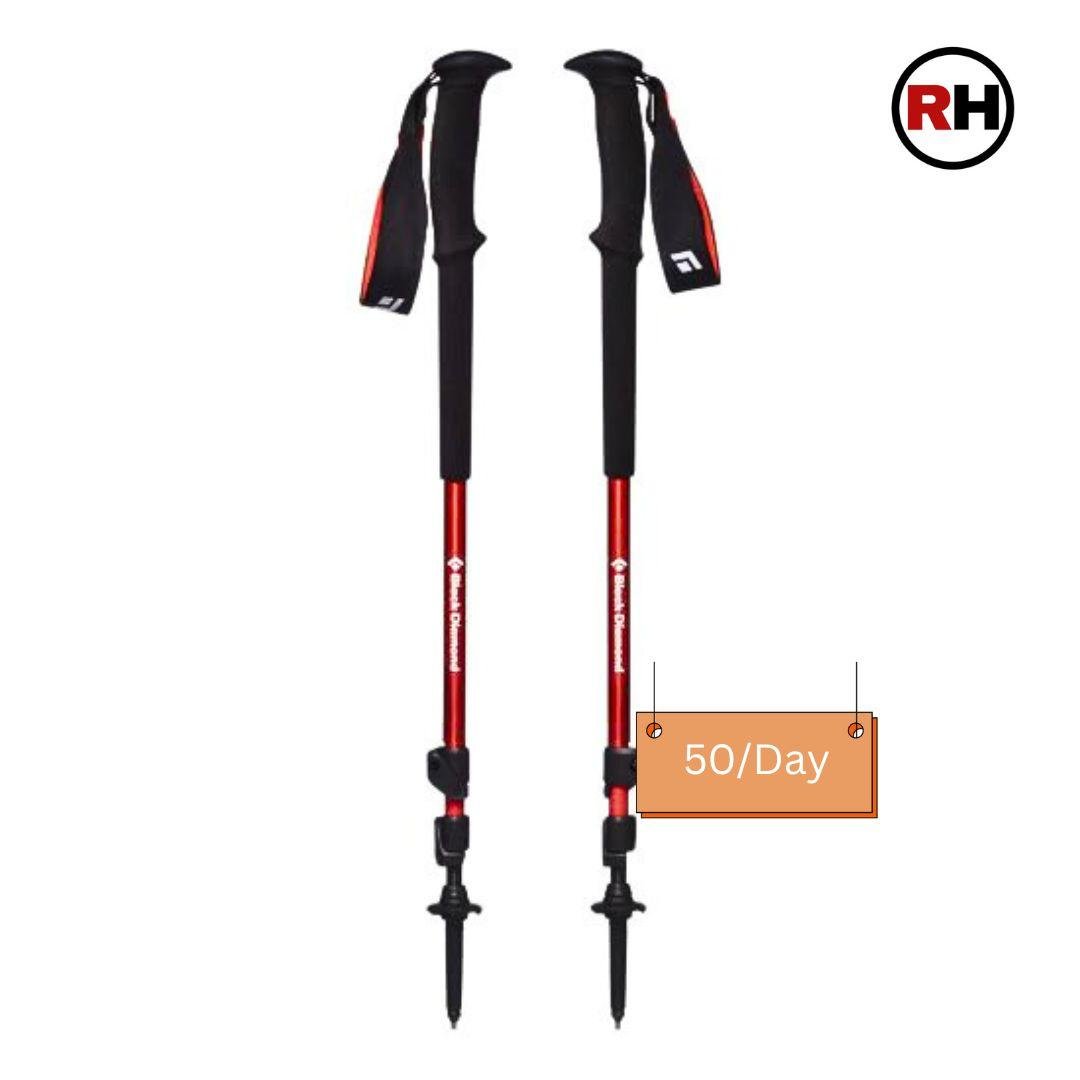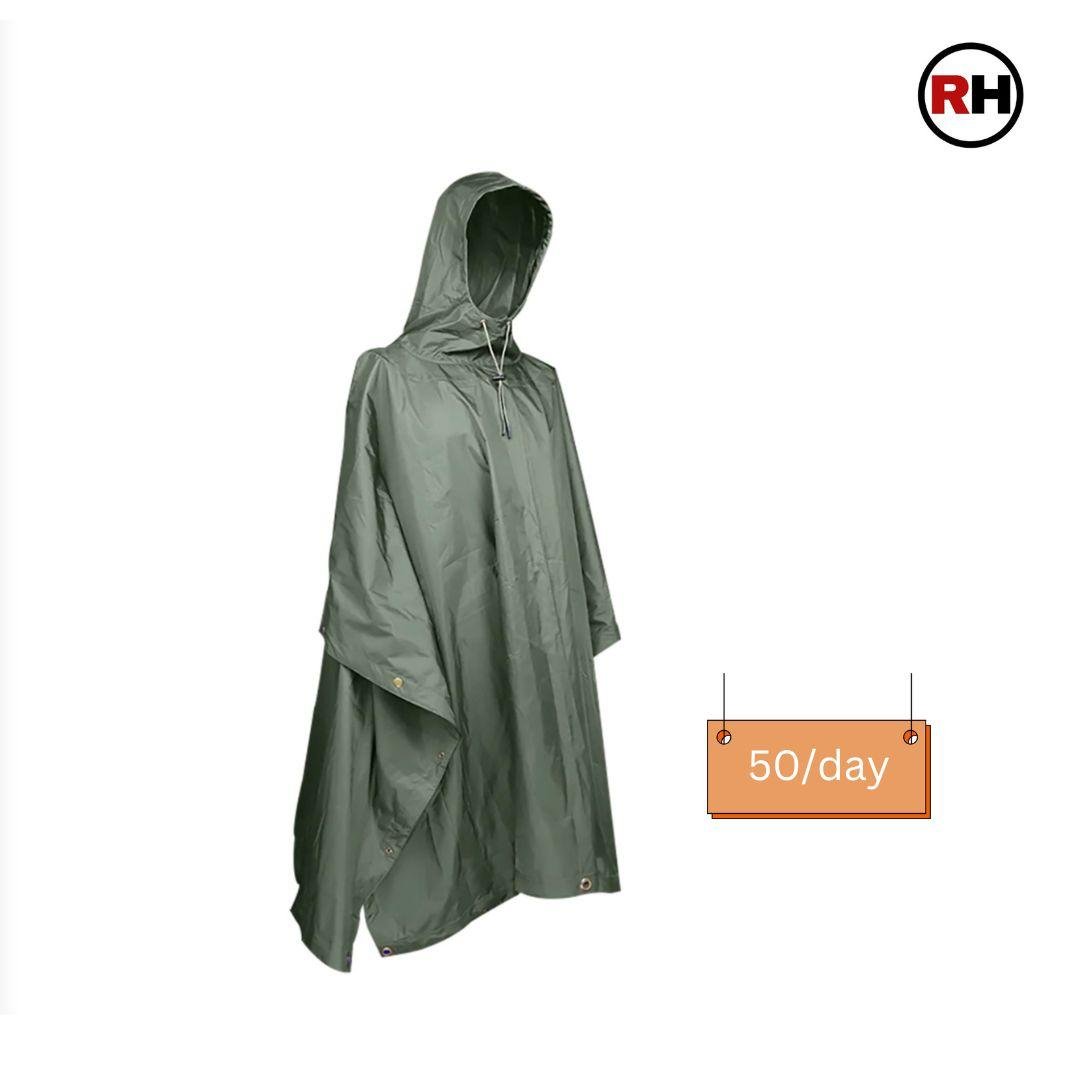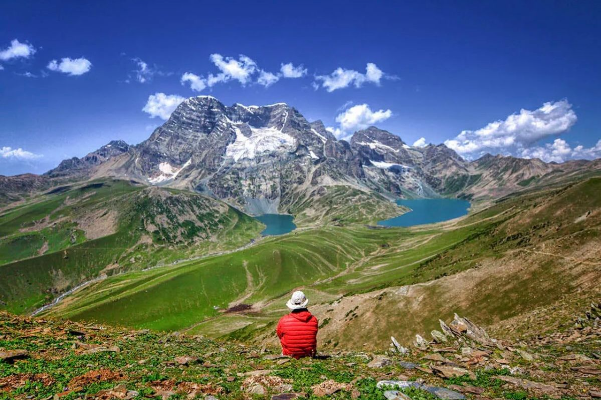KEDARKANTHA TREK
The Kedarkantha trek is a popular winter trek, trek location in the Uttarkashi district of Uttarakhand, India
Trek Grade
Easy-Moderate
Highest Altitute
12,500 ft/3,810 m
Best Season
Mid Nov -March
Trek Duration
4 Night | 5 Days
Trekking Km
18 Km
Stays
Hotel/Camp
transport
Dehradun
trek region
Uttarakhand
Base camp
Sankri
Meals
veg meal/egg
Trek Grade
Easy to Moderate
Highest Altitute
12,500 ft/3,810 m
Trek Duration
4 Night | 5 Days
Base camp
Sankri
Meals
veg meal/egg
Stays
Hotel/Camp
transport
Dehradun
trek region
Uttarakhand
Trekking Km
18 Km
Trek Grade
Easy to Moderate
Highest Altitute
15,000 feet
Base camp
Rishikesh
Trek Duration
3D | 2N
Stays
Meals
transport
activities
How to Reach
Trek Grade
Trek Grade
Trek Grade
Trek Grade
Trek Grade
Kedarkantha Trek Overview
The Kedarkantha trek is a popular winter trekking destination in the Indian Himalayas, known for its stunning views, snow-covered landscapes, and relatively Easy to moderate level. This trek route is located in the Uttarkashi district of Uttarakhand, India and the summit of Kedarkantha stands at an altitude of approximately 12,500 ft (3,800 meters)
above sea level. The Kedarkantha trek begins in the majestic Govind Pashu Vihar Sanctuary and National Park, a scenic hamlet nestled in the Garhwal Himalayas.
The area is rich and filled with biodiversity. Flora and fauna in the sanctuary are of a Western Himalayan type. Sankri serves as the base camp for the Kedarkantha trek and is accessible by road from Dehradun.
The highlight of the Kedarkantha trek is reaching the summit, which rewards trekkers with breathtaking panoramic views of snow-capped peaks and the vast expanse of the Himalayan range. On clear days, you can see prominent peaks such as Swargarohini, Bandarpoonch, and Black Peak from the summit.
While the Kedarkantha trek is accessible throughout the year, it is especially popular during the winter months (December to April) when the region is blanketed in snow. The snow-covered landscape creates a magical ambiance, making it a favorite among winter trekking enthusiasts.
The Kedarkantha trek Package offers a perfect blend of adventure, natural beauty, and cultural immersion, making it an unforgettable experience for trekkers of all levels. Whether you’re a seasoned mountaineer or a first-time trekker, the charm of Kedarkantha is sure to leave a lasting impression.
Kedarkantha Trek Highlights
Snow-Covered Landscapes:
- The Kedarkantha trek offers mesmerizing views of snow-capped peaks, pristine meadows, and dense pine forests throughout the journey. Especially during the winter months, the entire trail is blanketed in snow, creating a magical winter wonderland atmosphere.
Panoramic Summit Views:
- Reaching the summit of Kedarkantha is the ultimate highlight of the trek. From the top, trekkers are treated to breathtaking panoramic views of the Himalayan range, including prominent peaks such as Swargarohini, Bandarpoonch, and Black Peak. The awe-inspiring vistas make the challenging ascent well worth the effort.
Snow-Covered Landscapes:
- The Kedarkantha trek offers opportunities for camping in picturesque locations along the
route. Campsites are typically set up in meadows or clearings with stunning views of the surrounding mountains. Spending the night under the starry sky amidst the tranquility of the Himalayan wilderness is an unforgettable experience.
Rich Cultural Experience:
- Along the trekking route, trekkers have the chance to interact with locals from
remote villages and learn about the region’s unique culture and traditions. The warm hospitality of the mountain communities adds a cultural dimension to the trekking experience.
Kedarkantha Trek Difficulty Level:
- Kedarkantha is considered a moderate trek, making it suitable for both beginners and experienced trekkers. The trail involves gradual ascents and descents, with some steep sections, but it doesn’t require any technical climbing skills. Trekkers of all ages and fitness levels can enjoy the adventure.
Wildlife Encounters:
- The Kedarkantha trekking route passes through pristine forests that are home to a variety of wildlife, including Himalayan birds, deer, and occasionally even sightings of elusive mountain animals like the Himalayan black bear or musk deer. Nature enthusiasts will appreciate the opportunity to spot these creatures in their natural habitat.
Accessibility:
- Sankri village, the starting point of the trek, is easily accessible by road from Dehradun. This makes Kedarkantha a convenient option for trekkers looking to escape into the mountains without the need for long and arduous journeys.
Trek Gallery
kedarkantha trek route Itinerary
Daily Hiking Schedule Of Kedarkantha trek
Day 1 Arrival Day - Dehradun to Base Camp Sankri
(210 km Drive, 8-9 hrs approx)
Arrival Day - Dehradun to Base Camp Sankri
(210 km Drive, 8-9 hrs approx)- Stay : Overnight stay in Guest House at Sankri
- Meal : Tea snacks, Dinner.
- Altitude : Sankari (6400 ft)
- Distance : By Road 210 kms
- Time Taken : By Road 8-9 hrs approx.
- Trek Grade : By Road
Embark on a picturesque journey from Dehradun to the enchanting base camp of Sankri, nestled amidst the Yamuna and Tons valleys, spanning a scenic 210 km drive. As you traverse through this breathtaking landscape, marvel at the Yamuna bridge and immerse yourself in the serenity of dense pine forests.
The road to Sankri winds through some of the most captivating destinations in the Himalayas, including the quaint towns of Mussoorie, Nainbagh, Damta, Newman, Mori, Purola, and Netwar, offering glimpses of nature’s grandeur at every turn.
Located within the tranquil environs of the Govind Wildlife Sanctuary in Uttarkashi district, Sankri welcomes you with its rustic charm and vibrant mini-market, renowned for its cozy wooden huts serving delectable local cuisine.
Explore the verdant apple orchards and lush greenery surrounding Sankri, basking in the pollution-free ambiance and breathtaking vistas of snow-capped mountains. As evening descends, be captivated by the mesmerizing sunset casting its warm glow over the majestic mountain ranges, with a panoramic view of the Swargarohini peaks from the base camp.
Sankri, adorned with around 250 quaint houses, boasts a handful of dhabas and shops, offering a glimpse into the simple yet captivating village life. Witness the ethereal spectacle of the setting sun behind the towering Himalayas, with the Swargarohini peaks glistening in the fading light.
Spend a serene night under the star-studded sky in comfortable camps at Sankri, indulging in a wholesome and delicious dinner. Let Roopkund Heaven ensure a seamless journey, arranging transportation from the Sankri base camp back to Dehradun, completing this unforgettable Himalayan adventure.
Day 2 trek from Sankri base camp to Juda ka talab
(3-4 km trek, 4-5 hrs approx)
trek from Sankri base camp to Juda ka talab
(3-4 km trek, 4-5 hrs approx)- Stay: Overnight stay at the camp in juda ka talab
- Meal: breakfast, packed lunch, evening tea snacks, soup and dinner.
- Altitude: Juda ka talab (8700 ft)
- Distance: By Trek 3-4 kms.
- Time Taken: By Trek 4-5 hrs approx.
- Trek Grade: Gradual
Embarking from the rustic charm of Sankri village, our journey towards the captivating Juda Ka Talab commences today. Rise with the sun, savor a hearty breakfast, and set forth on the path leading to this serene alpine lake, nestled at an elevation of 9100 ft. Anticipate a trek of approximately 4 km, spanning around 5 hours, as we immerse ourselves in nature’s embrace.
Our trail meanders through the village extension of Saur, tracing along a babbling stream, before veering into the enchanting realms of pine and maple forests. Ascending briskly, we navigate numerous suspension bridges and quaint mountain hamlets, each adding a layer of charm to our expedition towards Juda Ka Talab.
The path unfolds gracefully, gently inclining over the course of 2-3 hours. In the summer months, verdant foliage and a profusion of wildflowers adorn our route, while a carpet of maple and pine leaves paints a picturesque tapestry beneath our feet. However, during the winter’s embrace, a mantle of snow blankets the trail, potentially necessitating gaiters to navigate with ease. Keep a keen eye out for elusive Himalayan langurs and other wildlife inhabitants that may grace our path, though their fleeting presence often leaves only a hint of their passage.
Arriving at the Juda Ka Talab campsite, one is greeted by a scene of ethereal beauty. With an alpine lake shimmering on one side and a sentinel of pine trees standing sentinel on the other, the ambiance is nothing short of surreal. Here, amidst the embrace of mountains and the whispers of snow-laden pines, the tranquility of Juda Ka Talab washes over the soul. In the depths of winter, a veil of ice drapes the lake’s surface, casting a spellbinding panorama. Furthermore, the lake’s significance resonates with local lore, as it is believed to have been formed by droplets from Lord Shiva’s hair during meditation at Kedarkantha.
As twilight descends, revel in the warmth of camaraderie around a crackling bonfire, sharing tales and relishing heartymeals. The night sky, adorned with a myriad of stars, offers a celestial spectacle to behold. Retire to your tents, enveloped in the embrace of nature’s serenity, and let the whispers of the night lull you into peaceful slumber.
Day 3 Juda ka talab to kedarkantha basecamp
(4 km Trek, 4-5 hr approx)
Juda ka talab to kedarkantha basecamp
(4 km Trek, 4-5 hr approx)- Stay: Overnight stay at the Kedarkhantha base camp
- Meal: breakfast, packed lunch, evening snacks, shup and dinner.
- Altitude: kedarkantha (11,250 ft).
- Distance: By Trek 4 km
- Time Taken: By Trek 4-5 hrs approx.
- Trek Grade: Gradual
Commencing our day with the first light and a nourishing breakfast, we embark on our journey towards the
Kedarkantha Base Camp, greeted by the splendor of a sunrise painting the sky in hues of gold. Located at an
elevation of 11,250 ft, the base camp beckons, offering a sanctuary amidst the towering peaks. The trek spans a
distance of 4 kilometers from Juda Ka Talab, a journey that unfolds over approximately 3 hours of moderate-paced
walking.
Navigating the well-marked trail, we traverse through a landscape that transitions from lush forests of pine and oak to
expansive meadows stretching as far as the eye can see. Adorned with shepherd huts, these meadows bear witness
to the timeless rhythm of mountain life. As we progress, the horizon is graced by the majestic presence of Himalayan
giants-Swargarohini, Bandarpoonch, Ranglana, Kala Nag, and more-standing sentinel over the realm of dreams.
The Kedarkantha trail, though slightly steeper than the previous day, remains accessible and welcoming to trekkers of
all levels. Even amidst the winter’s embrace, the trek retains its charm, with the snow-covered path adding to its allure.
In the embrace of summer, verdant greenery blankets the landscape, offering a vibrant contrast to the pristine white
of snow-laden peaks.
Upon reaching the base camp, take respite and rejuvenate amidst the tranquil surroundings. Embark on leisurely
strolls, immersing yourself in the natural splendor that surrounds you. As night descends, indulge in a hearty dinner,
savoring the warmth of companionship around a crackling fire. Gaze skyward, where a canopy of stars unfolds,
illuminating the darkness with their celestial dance.
At such lofty altitudes, the chill of the mountain air can be palpable, reminding us to layer up for warmth and
protection. Retire to your tents early, allowing the embrace of slumber to prepare you for the ascent that awaits on the
morrow, ensuring that each step towards the summit is met with vigor and resolve.
Day 4 kedarkantha base camp to juda ka talab
(10 km Trek 10 hr approx)
kedarkantha base camp to juda ka talab
(10 km Trek 10 hr approx)- Stay: Overnight stay at the Camp in Juda ka talab
- Meal: breakfast, packed lunch, snaks, soup and dinner.
- Altitude: Kadarkantha Peak (12,500 ft).
- Distance: By Trek 10 kms
- Time Taken: By Trek 10 hrs approx.
- Trek Grade: Steep
Today, we conquer the towering Kedarkantha Peak summit at 12,500 ft, trekking from base camp to summit and descending to Juda ka talab, covering 10 km in 10 hours. Starting with a hearty breakfast, we ascend through lush forests, facing a challenging incline before reaching the summit with panoramic Himalayan vistas and a sacred temple. After lunch, we descend to Juda ka talab, enjoying a swift journey to the tranquil campsite at 8700 ft. Gathered under the stars, we share stories over a comforting dinner, ready to rest and recharge for future adventures.
Day 5 Trek from Juda ka talab to Sankri then drive to Dehradun
(4 km trek 2-3 hrs) (210 km Drive 9-10 hr)
Trek from Juda ka talab to Sankri then drive to Dehradun
(4 km trek 2-3 hrs) (210 km Drive 9-10 hr)- Meal: breakfast, lunch.
- Distance: By Trek 4 km. By Road 210 kms
- Time Taken: By Trek 2-3 hrs approx., By Road 9-10 hr
- Trek Grade: Easy
The final leg of the trek involves descending from Juda ka Talab to Sankri. We will descend from an altitude of 8700 ft to 6400 ft and the trek distance is about 4 km. It takes approx 2-3 hours to complete the descent.
Rise with the sun and enjoy a scrumptious breakfast. The sunrise in the Himalayas has a unique splendor, which is quite hypnotizing. After breakfast, we will begin our descent towards Sankri. You will trek through forests and gurgling streams. You can fill your water bottles in the streams. Soon the forest opens up to a ridge from where you get a birds eye view of the Har ki Dun Valley.
As our unforgettable journey draws to a close, today (same day) marks our return to Dehradun, carrying with us a treasure trove of cherished memories. Transportation in Traveller or similar vehicles has been arranged from Sankri, ensuring a comfortable journey back. Covering a distance of 210 km, our route along NH 123 promises scenic delights, with breathtaking vistas unfolding before us. Take in the natural splendor that surrounds us, as picturesque landscapes stretch as far as the eye can see. Our anticipated arrival in Dehradun is between 7:00 – 8:00 PM, allowing ample time to plan any onward arrangements accordingly As we bid farewell to the mountains and valleys that have captivated our hearts, let us carry the essence of this journey with us, forever etched in our memories.
- Stay is included on all days of the trek (from Sankari to Sankari). You will be staying in Hotel on a Triple/quard sharing basis.
- Transport charges from Dehradun to Sankari and return.
- All meals from dinner at Sankari on Day 1 and to Lunch on Day 5 are included. Meals are simple, nutritious and vegetarian.
- First aid medical kits, oxygen cylinder and stretcher.
- All fuel charges, toll taxes and needed forest entry fees along with permits.
- Mountaineering qualified and professional trek leader, guide, cook and support staff.
- GST 5% (it is Mandatory)
- Any emergency evacuation charges
- Any services that are not mentioned in the cost inclusion section.
- Any Meals/accommodation beside the itinerary or not mentioned in the program.
- Mules or porters to carry personal luggage.
Best Time For Kedarkantha Trek
The Kedarkantha trek stands out among treks in the Indian Himalayas for its extended accessibility throughout much of the year. This enchanting route is open for exploration for a span of 8 months, excluding the period from May to September. During these months, which coincide with the peak rainy and summer season in Uttarakhand, the trek is temporarily closed for safety reasons.
Kedarkantha Trek in Winters (November- February)
- Kedarkantha is renowned as a premier winter trek, and rightfully so. The breathtakingly beautiful snow-clad
landscape, coupled with an exhilarating summit ascent, particularly during the winter months, can leave anyone
awestruck. - This iconic trek was introduced to the Indian trekking scene by Indiahikes, specifically highlighting its
appeal as a winter adventure. - Ideal for beginners, Kedarkantha offers the perfect blend of beauty and excitement. Trekking through dense
snow-covered forests provides a serene backdrop, while camping atop thick snow mounds adds to the adventure. - The summit climb, enveloped in a pristine blanket of snow, promises an adrenaline-pumping experience for trekkers of all levels. These unique elements contribute to making the winter trek an unforgettable journey, even for seasoned adventurers.
Kedarkantha Trek in Spring (March-April)
- In March, Kedarkantha retains much of its snow cover, particularly at the higher campsites leading to the summit.
Additionally, this time of year showcases the vibrant blooms of Rhododendrons and freshly emerged grasslands,
creating a stunning contrast of colors against the snowy backdrop as you ascend. - By April, the snow begins to melt away, unveiling Kedarkantha’s landscape after its winter slumber.
- April in Kedarkantha is a must-experience, with pleasant trekking and camping weather and the full onset of spring. The entire route bursts into a kaleidoscope of colors, offering a mesmerizing sight all along the way.
How to Reach For Kedarkantha Trek From Delhi?
By Bus:
- From Delhi, a regular bus service operates to Dehradun. The main bus station in Delhi is ISBT Kashmere Gate, offering both AC and non-AC buses for the journey to Dehradun.
By Train:
- To reach Dehradun from Delhi stations (NDLS, DLI, DSA, NZM) by train: Take a direct train to Dehradun Railway Station.
By Air:
- The closest airport to reach Dehradun by flight is Jolly Grant Airport, located approximately 35 km from the city. Regular flights from Delhi to Dehradun are available. If you plan to arrive by flight, it’s advisable to schedule your arrival one day in advance.
What to Pack for Your Kedarkantha Trek?
As a trekking, adventure, and travel company, we often receive inquiries from our trekkers, and one of the most frequent questions is about what to pack for the kedarkantha trek. Sometimes, it can be challenging to provide detailed explanations, so we’ve compiled a comprehensive packing list that will be beneficial for all trekkers heading to the Himalayas. When preparing for a trek and organizing your gear, it’s helpful to follow a systematic approach. You can start either from head to foot or foot to head, ensuring you cover all essentials and minimize the risk of forgetting important items. So, take it step by step and pack accordingly.
Footwear and Backpack
✅Trekking shoes with ankle support
✅Backpack with rain cover
✅Daypack with rain cover
Warm Layers and Clothing
✅Warm layers (Padded jackets )
✅3 layers for spring, summer, and monsoon treks (1 woolen sweater, 1 fleece, 1 padded jacket)
✅4 layers for autumn treks (1 woolen sweater, 2 fleece, 1 padded jacket)
✅5 layers for winter treks (1 pair of thermals, 1 woolen sweater, 2 fleece, 1 padded jacket)
✅3 Collared T-shirts (Wear one, carry two)
✅2 quick-dry trek pants (Wear one, carry one)
Accessories
✅Sunglasses
✅Sun cap, preferably with flaps
✅Waterproof gloves
✅Balaclava
✅Woolen socks (2-3 pairs od Dry + 1 pair of Woolen))
✅Headlamp
✅Trekking pole
✅Rain Jacket + pants/poncho
Toiletries
✅Suncreen
✅Moisturizer
✅Light towel
✅Lip balm or vaseline
✅Toilet paper (wet wipes are strictly not allowed on our treks)
✅Toothbrush
✅Toothpaste
✅Reusable plastic covers (for used clothes)
✅Trash bags (Carry out all your waste and leave no trace behind)
Frequently Asked Questions About Kedarkantha Trek
Get all your questions answered here
When is the best time to do the Kedarkantha Trek?
The Kedarkantha Trek is a breathtaking journey through the Garhwal Himalayas, and the best time to embark on this adventure largely depends on the kind of experience you’re seeking. Winter, from December to March, is widely considered the best time for the trek, offering a magical snow-covered landscape that transforms the entire trail into a winter wonderland. This season provides a classic Himalayan snow trekking experience, with pristine white forests, frozen lakes, and clear views of snow-capped peaks. If you enjoy trekking through snow and don’t mind the cold, this is the most rewarding time to go.
For those who prefer milder conditions, spring (April to early May) is also a great time. As the snow begins to melt, the forests come alive with blooming rhododendrons and lush greenery, offering a vibrant contrast to the winter whiteness. The weather is relatively pleasant, making it ideal for first-time trekkers.
Meanwhile, autumn (October to November) presents clear skies and golden-brown forests, thanks to the post-monsoon freshness. The air is crisp, the views are stunning, and the trails are peaceful, providing a serene trekking experience.
Is prior trekking experience required for the Kedarkantha Trek?
No, prior trekking experience is not required for the Kedarkantha Trek, which is one of the reasons it is highly recommended for beginners. This trek is considered easy to moderate in difficulty, with well-marked trails, gradual ascents, and a manageable altitude of around 12,500 feet (3,800 meters). It is an ideal choice for first-time trekkers who want to experience the beauty of the Himalayas, including snow-covered landscapes, dense pine forests, and panoramic mountain views.
While the trek does not demand technical skills or prior experience, a basic level of physical fitness is important. Preparing through regular walking, jogging, or light workouts in the weeks leading up to the trek will help improve stamina and make the journey more comfortable. With proper guidance, acclimatization, and a positive mindset, even those new to trekking can successfully complete and enjoy the Kedarkantha Trek.
What is the Kedarkantha trek height?
The Kedarkantha Trek reaches a maximum altitude of approximately 12,500 feet (3,800 meters) above sea level. This summit point offers stunning 360-degree panoramic views of some of the most majestic Himalayan peaks, including Swargarohini, Bandarpoonch, Black Peak, and Ranglana. The trek typically starts from the base village of Sankri, which is situated at an altitude of around 6,400 feet (1,950 meters). Over the course of several days, trekkers gradually ascend through dense pine forests, snow-covered meadows, and scenic campsites like Juda Ka Talab and Base Camp, allowing the body time to acclimatize to the increasing elevation. While the altitude is significant, the steady and well-paced itinerary makes the trek manageable even for beginners, provided they are in decent physical condition and take proper precautions against altitude-related discomforts.
What is the duration and how long is Kedarkantha Trek?
The Kedarkantha Trek is a relatively short yet incredibly scenic Himalayan trek that usually takes about 5 to 6 days to complete, including travel time to and from the base village, Sankri. The total trekking distance is around 20 to 23 kilometers, which makes it a great choice for beginners as well as those looking for a quick Himalayan adventure. The trail gradually ascends through dense pine forests, snow-covered meadows, peaceful campsites, and offers breathtaking views of towering mountain peaks.
Trekkers typically walk around 3 to 7 kilometers each day, which allows for proper rest, acclimatization, and enjoyment of the surroundings. Despite being a short trek, Kedarkantha provides a rich and rewarding experience, combining natural beauty, adventure, and a glimpse into the peaceful life of the mountains.
Is a mobile network available on the Kedarkantha Trek?
Mobile network on the Kedarkantha Trek is quite limited and mostly unreliable. At the base village Sankri, you might get weak signals from providers like Jio, Airtel, Vodafone, or BSNL, with BSNL generally having better coverage. However, once you start the trek, mobile connectivity mostly disappears due to the remote and high-altitude terrain. Some trekkers have reported brief signals at the summit, enough for a quick call or message, but this is not guaranteed. It’s best to make important calls before leaving Sankri and be prepared to stay offline during the trek. Carrying a BSNL SIM may improve your chances, but overall, the trek is a great opportunity for a digital detox and to enjoy the natural beauty without distraction.
Will there be electricity at the campsites on the trek?
Electricity at the campsites on the Kedarkantha Trek is generally very limited. Most campsites offer basic facilities, and while some may have solar-powered lights or charging points, these are often available only for a few hours in the evening and may be shared among all trekkers. Power supply depends on weather conditions and the camp’s setup, so it’s best to carry your own power bank to keep your devices charged.
Overall, don’t expect consistent or guaranteed electricity—plan to be mostly self-sufficient during the trek.
Is Kedarkantha trek safe?
Yes, the Kedarkantha Trek is generally considered safe for trekkers, especially because it is a well-established and popular route with gradual climbs and well-marked trails. It is suitable for beginners and experienced hikers alike. However, like any high-altitude trek, safety depends on proper preparation, including physical fitness, acclimatization, and carrying appropriate gear for cold weather. It’s important to trek with a reliable guide or group, stay hydrated, and be aware of altitude sickness symptoms. Weather in the mountains can change quickly, so monitoring conditions and following expert advice helps ensure a safe and enjoyable trek.
Overall, with proper planning and precautions, Kedarkantha is a rewarding and safe Himalayan adventure.
Kedarkantha Trek Package Price
Sankri-Sankri
Add ons
Total: ₹








Recommended Trips
Make the most of your weekend with a trek into nature



















